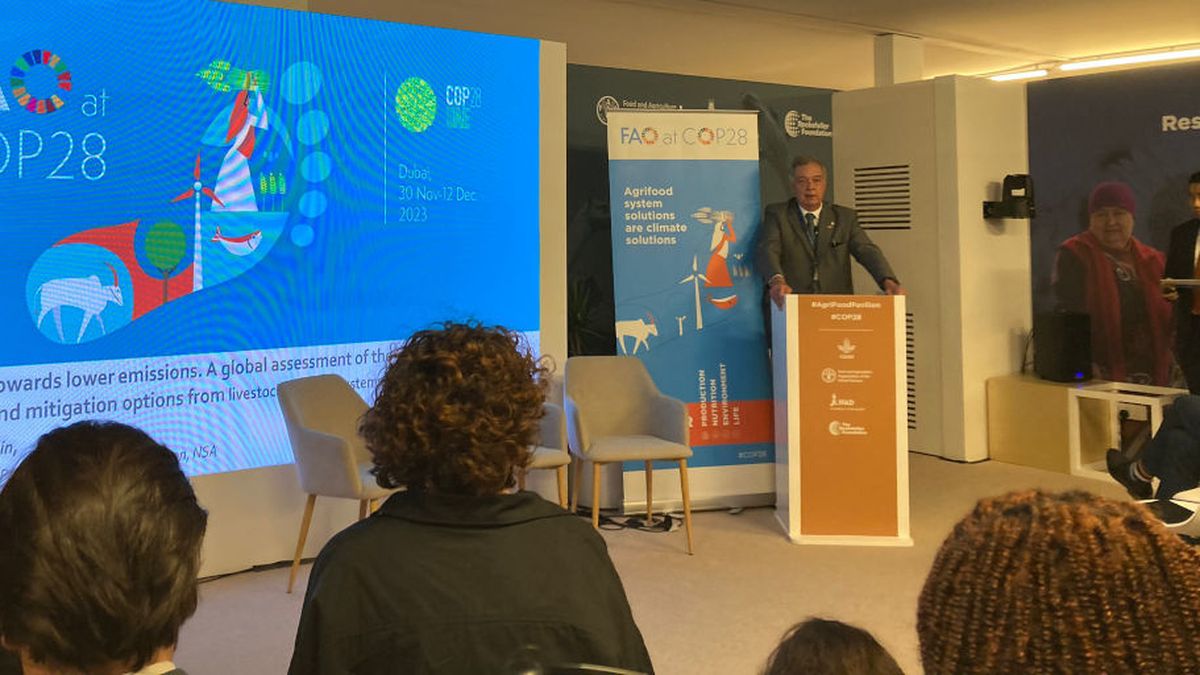He Minister of Livestock, Agriculture and Fisheries, Fernando Mattos, promoted the importance of “sustainable practices” in the activity with the aim of reducing emissions of Greenhouse gases (GEI), when speaking during the United Nations Conference on the Climate change (COP 28), which takes place in Dubai.
During the event, organized by the UN, Mattos referred to the country’s model and the importance of “mitigating the environmental impact of livestock systems,” while highlighting that animal production represents 12% of emissions, after the latest report from the Food and Agriculture Organization of the United Nations (FAO).
By presenting during the opening of the event, Mattos specified that the National Meat Institute (INAC) and the National Agricultural Research Institute (INIA) promote the use of alternative metrics that recognize that methane is a short-lived gas. “If this use becomes widespread, it can be anticipated that the currently disclosed emissions figure (12%) will be substantially lower,” he said.
After echoing the report of the FAO on “Paths towards lower emissions: A global evaluation of the greenhouse effect, gas emissions and mitigation options for livestock agri-food systems”, the leader even dared to predict that “when, in addition to the emission, the capture of livestock systems is analyzed, it is very likely that the Uruguayan livestock be climate neutral” and graphed: “That is to say, it does not contribute to additional warming of the planet.”
The FAO report on emissions reduction
The FAO report revealed that agri-food livestock systems (cattle, buffalo, sheep, goats, pigs and chickens) are responsible for 6.2 gigatonnes (Gt) of water equivalent carbon dioxide (CO2 eq) in emissions. “This represents 12% of all anthropogenic GHG emissions (based on the reference year 2015),” they noted from the MGAP.
For livestock farming, this difference is fundamental, because the original FAO estimate made in 2006 attributed 18% of total emissions to that sector. However, the first GLEAM report of 2013 decreased that figure to 14.5%, reaching the current 12% using other metrics.
“The intensity of emissions, or carbon footprint, of livestock production varies significantly between countries, species and production systems due to differences in breeds, management practices, feed quality and environmental conditions,” the statement reviewed the technical details.
Anyway, the Ministry of Livestock, Agriculture and Fisheries indicated that “the adoption of sustainable practices is crucial to achieve lower emissions and mitigate the environmental impact of livestock systems” and graphed: “These include improvements in animal health and well-being, improving livestock productivity, implementation of new feeding practices and nutrition, reducing food loss and waste, improving husbandry practices and implementing measures that directly target GHG emissions.
Finally, the authorities concluded that, “by collectively implementing these improvements, the livestock sector has the potential to achieve emissions reductions.”
Source: Ambito




